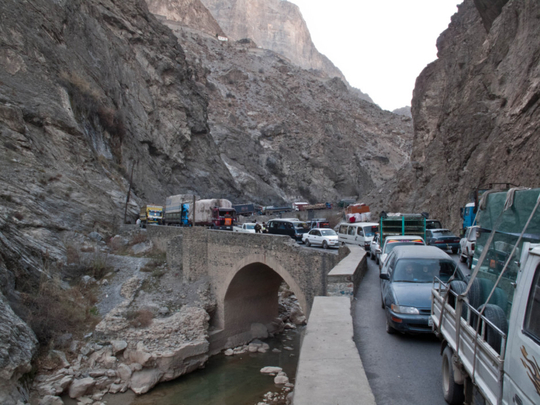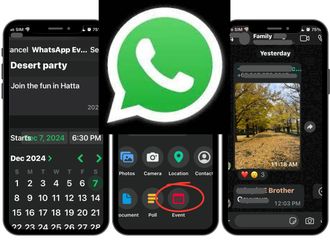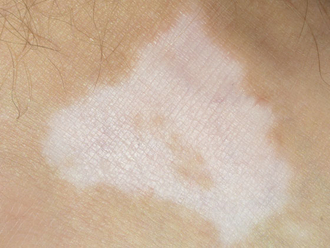
“This is a fatal accident,” I thought as my car plunged off a cliff in Afghanistan.
Before foreign correspondents go into war zones, many often spend a few days at hostile environment training. One of the first lessons you learn is that you are far more likely to be killed or injured in a vehicle accident than you are in a terrorist attack or crossfire between armies.
On a Saturday in April, driving from Jalalabad to Kabul, I became part of that statistic here in Afghanistan.
As security has deteriorated throughout Afghanistan in recent years, journalists must continually evaluate what risks are worth taking. The road from Kabul to Jalalabad is notoriously dangerous because of clashes between Afghan troops and Taliban fighters and criminal gangs. But I wanted to interview someone in Jalalabad, it was a slow-news Saturday, and I had been informed that security had improved along the highway in recent weeks.
The three-hour trip from Kabul to Jalalabad, a key transit route near the Pakistan-Afghanistan border, went smoothly as my car — like most vehicles on that highway — sped down the mountainous, two-lane highway weaving in and out of traffic.
Returning on Saturday afternoon, however, it began to rain. I decided to take a nap and sprawled out in the back seat as my Afghan translator chatted with the driver in the front seat.
Before dozing off, I said, “Slow down, it’s raining.”
A short time later, I woke up to the sound of screeching tyres. As I glanced up at the windshield, the car was shooting over a cliff. My only thought was:
“This is a fatal accident.”
I had been warned.
In a gripping 2010 story, former “New York Times” reporter Dexter Filkins documented the deadly history of vehicle accidents as the highway crosses through the Kabul Gorge.
“The 40-mile [64-kilometre] stretch, a breathtaking chasm of mountains and cliffs between Kabul and Jalalabad, claims so many lives so regularly that most people stopped counting long ago. Cars flip and flatten. Trucks soar to the valley floor. Buses play chicken; buses collide ... Most people die,” wrote Filkins.
Plenty of YouTube videos depict the consequences of even the slightest wrong turn behind the wheel on that stretch of highway.
After plunging to the bottom of the two-storey cliff, our car slammed into a river engorged by melting snow and days of spring rains.
Though vehicle safety advocates will likely disagree with my assessment, I think I may be alive because the car landed directly in the water, softening the impact. Because I had been lying flat on the back seat, I think I was spared a trip into the windshield. Instead, I was thrown sideways into the seat in front of me. By not having my seat belt on — few Afghans wear them, and many foreigners believe that they can be more easily identified as such if they wear one — I was able to immediately react as cold water began pouring into the car.
And because I’ve also worked in Pakistan, and travelled on some of the world’s other “most dangerous roads”, including treacherous one-lane jeep roads that lead to some of the world’s tallest mountains in the Himalayan range, I’ve had plenty of time to think over the years about how I would react if I somehow survived a trip off a steep ravine.
I don’t really remember how I got out of the car after impact; maybe through a shattered window or maybe by opening the door.
But after wading or swimming a few yards to shore, I was on dry land.
“I am alive,” I thought.
Dazed, I scurried up the hillside on my hands and knees to the road. When I regained my senses to look back at the river, I saw the car — with my colleagues still in it — floating away. I thought they were dead.
But then, as the car was bobbing in the muddy rapids, both the driver and Mohammad Sharif, the “Washington Post” correspondent and translator, began crawling out of the windows.
I was in shock, but I pulled out my water-logged iPhone and shot a quick video of their escape. Then, my phone stopped working, and I realised my leg was bleeding. Later, I saw a video posted to Facebook by another witness. It showed the car tipping over as Sharif and the driver stood on top of it, forcing them to make a desperate swim to an island in the middle of the river.
By this point, numerous Afghan motorists had stopped to gawk, shoot pictures and offer assistance.
“How many people in the car?” they shouted. “Women, children?”
There was initially considerable confusion, both within the crowd and in my mind. But I could see Sharif, his face bloodied, and the driver staggering on the island. Plus me on the other bank.
“No one in the car,” I yelled.
Within minutes, a few Afghan police officers arrived on the scene. In recent months, journalists here have spent considerable time documenting the substandard condition of the Afghan National Police Force as it struggles to combat the country’s many woes.
But at that moment, for this incident, Afghan security forces performed admirably.
Recalling another lesson from my hazardous duty training, I took off the top of my shalwar kameez to try to wrap my bloody leg. But an officer stopped me and instead pulled a bandage from his pocket and applied it to my wound.
Realising I spoke only English, officers began asking, “Who are you? Why are you here?”
“I am a journalist from the United States,” I responded.
“It’s not safe for you here,” several people shouted.
I assumed they meant I was not safe from the threat Taliban militants continue to pose on that stretch of highway. But they could have just as easily been referring to the cars and overweight trucks that continued to speed down that windy, slick highway past our accident scene.
Whatever the case, with my staff trapped on the island with little hope of a quick rescue, a man walked up to me and identified himself as a former Afghan translator for the US military. Aimal Khan was now a taxi driver, and was insisting I immediately needed to leave with him for Kabul.
“Go, go, go,” the police began shouting, even though the taxi was already full with other passengers.
Reluctantly, I got into the over-crowded taxi for the hour drive to Kabul, terrified both of the dangerous mountain curves that remained ahead as well as the threat of being kidnapped.
Although Khan, too, was driving way too fast as the highway crested 2,000 feet above the valley floor, the driver quickly became a comforting companion.
He let me use his cellphone to make expensive phone calls back to Washington to alert my editors about the accident. He stopped to buy me a soda with his own money. To make sure I was comfortable, Khan drove with another passenger squeezed next to him in the driver’s seat, instead of in my lap.
And Khan gave me a scarf to cover my dirty and bloodied trousers so soldiers manning checkpoints into Kabul would not become suspicious and detain me, perhaps adding hours onto my trip to a hospital.
But for the entire trip, Khan spoke about having worked as a US military translator and how he was waiting for approval to be resettled in the United States.
As most Americans who work in Afghanistan can attest, thousands of Afghans strongly believe they have been misled by the United States. In exchange for helping US forces during the height of the war, many had been promised resettlement in the United States. But domestic security concerns and bureaucracy have left thousands in limbo as they await approval.
As he drove towards Kabul, it quickly became apparent that Khan hoped I could help him as much as he was helping me. Many Afghans assume, wrongly, that any US citizens they encounter here have the power to influence State Department decisions about visas.
Khan spoke of translating for the US Army’s 101st Airborne Division and 10th Mountain Division in Kandahar province.
Although I was still frazzled from the accident, I stressed to Khan that I am certainly not his magic ticket to the United States. But I did agree to write him a letter thanking him for helping to rescue an American citizen.
Finally, we made it to the “Washington Post” bureau in Kabul, a stop on the way to the hospital.
Before getting out of the car, another passenger in the taxi leant over and said he was surprised I had ever gotten into the vehicle in the first place.
“A piece of advice,” the passenger said. “Never trust anyone in Afghanistan. But you are lucky because he’s a good guy.”
Indeed, Saturday was our lucky day.
Although Afghan doctors continue to evaluate us, it seems that my staff and I escaped our ordeal with relatively minor to moderate injuries.
–Washington Post












